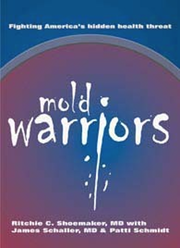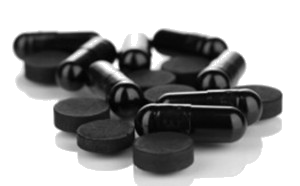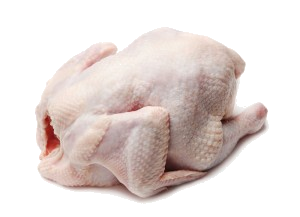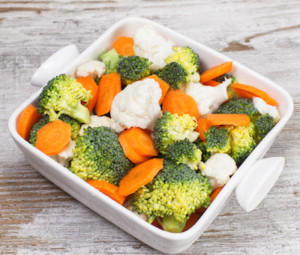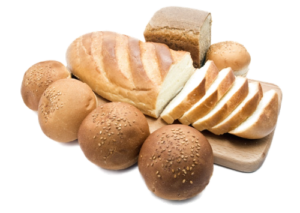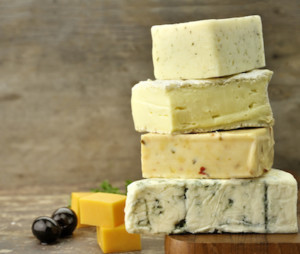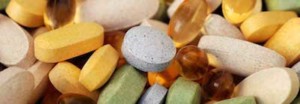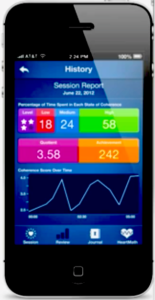Whether you’re exercising outdoors or meditating on a beach, catching some rays improves how you feel. The sun does a lot for you: a little sunshine raises vitamin D and serotonin levels, reduces the risk of diabetes and certain cancers, and boosts fertility [1]. It’s good to get outside.
But as is the case with most things, the health benefits of sunlight depend on dose. Too much sunlight is bad news: there’s a correlation between the number of sunburns you get and whether or not you develop skin cancer [2]. The trick is to avoid overexposure.
The most Bulletproof way to do that is to cover up with clothing, but that’s not always a practical option. Sunscreen is useful for those times when you’re going to be naked in the sun all day.
Unfortunately, some sunscreens aren’t much better for you than the sunburns they prevent. Many varieties contain unsafe chemicals, and their producers use questionable marketing tactics.
Here’s the lowdown on the sunscreen industry, which chemicals to avoid, and how to protect yourself from the sun, both inside and out.
The EWG’s Sunscreen Hall Of Shame
There are hundreds of sunscreen brands out there. Many claim to be “dermatologist tested,” “all-natural,” etc., but companies don’t really have to back up these statements and they don’t mean much.
I like to imagine a dermatologist smeared with lots of different brands of sunscreen in front of a sun lamp. Yep, now they’re all dermatologist tested!
What can you learn when you strip away savvy sunscreen marketing?
A massive study conducted by the scientists at the Environmental Working Group (EWG), a national environmental organization (one I support with meaningful donations) that analyzes toxic chemical use in consumer products, scrutinized over 1,700 SPF rated products from sunscreens, creams to lip balms.
The study found that many sunscreens contain hazardous chemicals.[3] One of the most common ones was the hormone disruptor oxybenzone, linked to endocrine imbalances and skin damage. Also prevalent was retinyl palmitate, a possible carcinogen. The study noted that spray sunscreens often contain harmful inhalants and don’t cover the skin evenly, and that SPF protection tops out at 30-50 SPF, so anything advertising a higher SPF is a marketing gimmick.
The study says that Neutrogena products raised an unusual number of flags because of the brand’s egregious marketing. It markets itself as the “#1 dermatologist recommended sun care brand.” Yet EWG has given most of the Neutrogena’s products it analyzed a failing grade. [4]
Other products EWG scrutinized and found lacking include Banana Boat, Coppertone, Kroger and CVS’s house brand. [5]
Products with super high SPF values of over 50-110+ were categorized as misleading. Canada, Europe, Japan and Australia do not allow ultra-high labeling for SPFs, but the U.S. does. [6] In the US, I’m expecting a GMO-based SPF 5000 sunscreen any day now.
The bottom line: only 21 percent of the 1,000 sunscreens analyzed for EWG’s guide scored high marks. [7] There are links to the good ones for you below.
Hack Your Sun (Over)Exposure
Check out these easy hacks to minimize the sun’s harmful effects and maximize sun-soaking benefits:
- Cover up! This is intuitive, but it’s still worth emphasizing. Protect yourself is with clothing and headgear. Make sure the weave in your clothing is tight enough to block harmful UV rays.
- Read sunscreen labels. Always check ingredients, and avoid retinyl palmitate (vitamin A) and oxybenzone.
- Use natural or mineral-based (titanium-based and zinc-based) sunscreens that reflect the sun’s rays away from your skin, as opposed to chemical sunscreens that absorb the sun’s rays. Many natural sunscreens protect skin just as well as conventional sunscreens without harsh chemicals. [8,9]
- Sprays don’t provide adequate coverage and inhalation poses a serious risk. Opt for lotions instead.
- Test spot yourself and your kids for allergens on the inside of the wrist the day before sun exposure.
- Apply and reapply sunscreen every two hours. Sweat and swimming diminish its effects. Better yet, wear a hat and a shirt.
- Be aware of high SPF claiming products over 50+ SPF. They give you a false sense of security. Apply and reapply every two hours regardless of SPF.
- Avoid sunscreen/bug repellent combos. Bug spray in my sun lotion? No way. Use natural bug repellants like diluted peppermint oil separately; you’ll dodge more harmful chemicals.
- Plan ahead. The day can take unexpected turns, so always have a hat and a shirt handy.
- Come on, guys: surveys show that men wear sunscreen half as much as women. Sunburns are not sexy. Neither is skin cancer. You don’t have to show off those abs all day. Put on a shirt already.
- Use umbrellas at the beach, park, and beyond.
- Choose a high performance sunscreen. Check out the EWG’s 2015 sunscreen guide to choosing the best sunblocks for your favorite activities. [10] [11]
Boost Your Internal Sunscreen
You can optimize your internal sunscreen by eating antioxidant-rich foods and taking certain supplements. Here are a few:
- Omega-3s (from diet and from supplements like krill oil) [12] [13]
- Resveratrol (blueberries and red grapes)
- Astaxanthin (salmon and fish oil)
- Catechins (coffee, chocolate, green and white tea)
- Vitamin E (supplement this one)
- Beta-carotene (carrots and red bell peppers)
Avoid Kryptonite Foods That Shouldn’t See The Light Of Day
You can also protect yourself (and feel awesome all day) if you eliminate foods that encourage sun damage.
Sugar is a kryptonite food that contributes to the formation of AGE’s (advanced glycation end-products), which play a role in the breakdown and aging of vascular and connective tissue. Studies have shown that UVA rays are far more toxic to skin that has an excessive buildup of AGEs. [14] [15]
Avoid spoiled and processed omega-6 fats from sources like canola, corn, soy and vegetable oil. These damaging fats can promote the development of skin cancer. [16]
Apps To Hack Your UV Exposure
The EWG has developed a great app called Skin Deep that rates personal care products including sunscreen. It’s handy when you find yourself in the sunscreen aisle.
Before you step out, the Environmental Protection Agency designed the Sunwise UV Index mobile app to check out hourly and daily UV radiation levels in your area.
How do you combat sun damage? Any hacks of your own to add? Leave it all in the comments below, and stay Bulletproof!
[expand title=”Click to read the complete list of references.” swaptitle=”Click to hide references.”]
[1] The UV Advantage, Dr. Michael F. Holick
[2] http://www.sciencedirect.com/science/article/pii/S0190962207024139
[3] http://www.ewg.org/2015sunscreen/hall-of-shame/
[4] http://www.ewg.org/2015sunscreen/report/executive-summary/
[5] http://www.ewg.org/2015sunscreen/hall-of-shame/
[6] http://www.fda.gov/forconsumers/consumerupdates/ucm258416.htm
[7] http://www.ewg.org/2015sunscreen/report/executive-summary/
[8] http://annals.org/article.aspx?articleid=1691732
[9] http://www.ewg.org/2015sunscreen/report/the-trouble-with-sunscreen-chemicals/
[10] http://healthychild.org/assets/HCHW_sunsafety_guide_v41.pdf
[11] http://www.ewg.org/2015sunscreen/hall-of-shame/
[12] http://www.ncbi.nlm.nih.gov/pubmed/1502263
[13] http://onlinelibrary.wiley.com/doi/10.1111/j.1751-1097.1989.tb04080.x/abstract
[14] http://www.ncbi.nlm.nih.gov/pubmed/12190875
[15] http://www.hindawi.com/journals/jo/2010/739852/
[16] http://www.ncbi.nlm.nih.gov/pubmed/8973605
[/expand]
